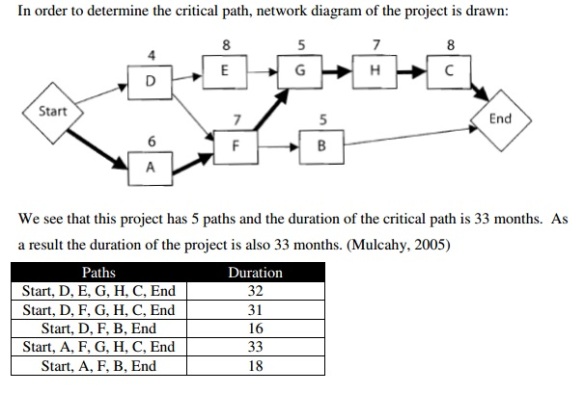Let’s talk, in this article, about the Critical Path Method (CPM) or Critical Path Analysis (CPA). Developed in the late 50’s by the US Navy and Du Pont, CPM is commonly used with all forms of projects, including construction, software development, research projects, product development, engineering, and plant maintenance, among others, the CPM is is a mathematically based algorithm for scheduling a set of project activities and it’s an important tool to for effective project management.
Planning a project usually involves dividing it into a number of small tasks that can be assigned to individuals or teams. The project’sschedule depends on the duration of these tasks and the sequence in which they are arranged. This sequence can be driven by several factors: customer deadlines, availability of personnel or resources, and dependencies among tasks. The last factor is the subject of this paper—in particular, how this sequence can affect the project’s duration and its finish date.
A schedule isn’t an arbitrary sequence of tasks, and it isn’t just a convenient arrangement that maximizes the use of resources for the shortest timeline. It must consider precedence — the relationship between the start and finish dates of interdependent tasks, where one task can’tstart until one or more other tasks are finished. These precedence relationships determine which tasks can be overlapped and which ones must be serial.
In applying the CPM, there are several steps and benefits that can be summarized as follows:
- Define the required tasks and put them down in an ordered (sequenced) list.
- Create a flowchart or other diagram showing each task in relation to the others.
- Identify the critical and non-critical relationships (paths) among tasks.
- Determine the expected completion or execution time for each task.
- Locate or devise alternatives (backups) for the most critical paths.
- identifies tasks which must be completed on time for the whole project to be completed on time
- Identifies which tasks can be delayed for a while if resource needs to be reallocated to catch up on missed tasks
A diagram called a Precedence Network shows the tasks and their scheduling dependencies. The Critical Path Method (CPM) identifies the tasks on the critical path within this network of tasks. There can actually be more than one critical path and CPM will reveal every one of them. The critical path method includes determining the longest path in the network diagram (the critical path) and the earliest and latest an activity can start, and the earliest and latest it can be completed. An example will be helpful to define this concept:
Soon, I will write some articles about the matemathics for project management, when will see all those calculus in detail.


